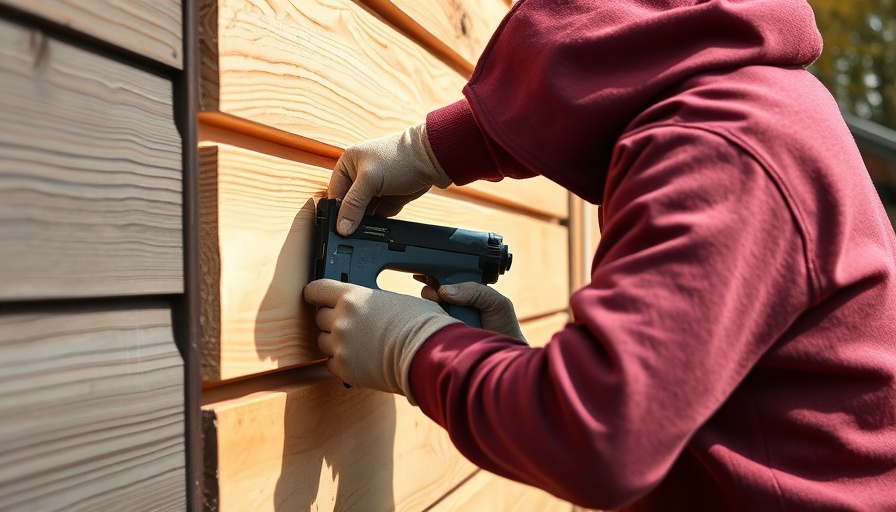
The Importance of Proper House Wrap Installation
Installing house wrap may not seem like the most exciting part of home improvement, but its significance cannot be overstated. Proper house wrap installation is vital for creating an energy-efficient barrier in your home that protects against the elements. Without it, you risk serious water damage, mold growth, and costly repairs down the line. This article aims to provide essential tips sourced from industry best practices and expert opinions to simplify this crucial task.
1. Choose Quality House Wrap
When embarking on your house wrap project, selecting the right product is the first step to success. Avoid cheap alternatives that have low perm ratings, typically around eight to twelve. These can lead to moisture issues as they allow vapor to build up, which can condense and result in dampness within your walls. Instead, opt for high-quality wraps like Tyvek, rated at approximately 54 perm, that enhance moisture control while optimizing energy efficiency.
2. Utilize Cap Nails for Secure Fastening
Modern construction standards have evolved, and so have fastening methods. Gone are the days of hammer tackers; instead, today’s house wraps are best installed using cap nails or cap staples. This might seem cumbersome, but the benefits outweigh the drawbacks. Cap fasteners secure the wrap 25 times better than staples alone, ensuring it stays put during severe weather conditions.
3. The Efficiency of The Stinger Tool
Hand-nailing cap fasteners might work in a pinch, but it’s not the most efficient method for DIYers. Consider using a tool like the Stinger® Cap Staple Hammer. This innovative tool is designed for the task, allowing you to drive cap nails easily, speeding up installation while maintaining the high standards necessary for effective water and wind protection.
4. Create a Wind-Tight Seal with Overlapping
Proper overlap is essential in maintaining a wind-tight seal. When installing the house wrap, ensure that every vertical application overlaps by at least six inches. This allows water to shed properly, directing it away from vulnerable spots. Following this practice can prevent leaks and prolong the life of your walls.
5. Wrapping Around Windows and Doors
Special attention should be paid to windows and doors. Wrap these areas thoroughly, making sure to cut slits that allow the wrap to fit snugly around the frames. This tight seal will prevent air from leaking in or out, ensuring maximum efficiency and comfort inside your home.
6. The Aftermath of Installation
After successfully installing your house wrap, it’s crucial to inspect your work before moving onto siding or other exterior finishes. Check for gaps, loose sections, or any areas that may need revisiting. This diligence saves money and time in the long run by averting potential damage.
7. The Role of House Wrap in Energy Efficiency
Understanding the impact of house wrap on your home's overall energy efficiency can encourage homeowners to take this installation seriously. By preventing air leaks, house wrap enhances your homes' insulation, leading to lower heating and cooling costs. It's a straightforward improvement that pays dividends in comfort and cost savings.
8. Planning for Different Climatic Conditions
Not all homes require the same approach to house wrap. Depending on your geographic location, consider the local climate when selecting materials. Areas with high moisture levels may require additional moisture barriers, while dry climates can focus more on vapor barriers for insulation. Tailoring your approach ensures the best performance.
9. Adhering to Building Codes
Always consider local building codes and regulations when installing house wraps. Compliance is essential not just for legal compliance but for ensuring your work meets safety standards. This practice helps avoid problems during inspections and ensures the longevity of your installation.
10. Common Misconceptions About House Wraps
Many homeowners believe that all house wraps are created equal, but that couldn't be further from the truth. Understanding the differences in material types, perm ratings, and installation techniques can shift your perspective and motivate you to invest wisely in materials.
In conclusion, equipping yourself with these handyman tips and DIY projects knowledge regarding house wrap installation not only boosts your skills but also preserves the quality of your home. For safe and effective home repairs and maintenance projects, always prioritize quality materials and practices. By investing time and effort in these essential preparations, your home will be well-guarded against the elements for years to come.
 Add Row
Add Row  Add
Add 



Write A Comment